” Down the Rabbit Hole”
Several years ago, I joined a San Francisco–based film cooperative called Scarycow. After volunteering on a couple of projects as a PA and location scout, I embarked on a journey to create a short animated musical film based on one of my scripts called “The Fishy’s Tale”. This is a blog dedicated to chronicling the “ups and downs” and “all-arounds” of this journey.
December 21, 2020
Somedays I feel like Alice after her reckless swan-dive into the rabbit hole. I’m not entirely sure if up is down or down is up. Certainly, the perspective is unique, so that the time passes quite agreeably. It makes ordinary things seem extraordinary and after all, isn’t that the artist’s métier? One could almost overlook the fact that I seem to be falling for an eternity with no end in sight. Once again, there is a bright side! The walls of the rabbit hole are lined with shelves well-plied with old, leather-bound books and assorted curiosities which captures my fascination and keeps me from wondering how deep the rabbit hole might be or how hard the landing. (Thank you, Lewis Carroll!) This makes the free fall less terrifying and more of a thrilling amusement ride. Nonetheless, amusement rides are not without risks—my neurotic, anxiety-prone self hastens to remind me. At present, we have arrived here. A place, somewhere midway through this filmmaking journey, but that is all we can safely say. Let us crack open the book and see where “Alice” aka ( your blog author ) finds herself.
One thing I have discovered so far about working on a small, independent film is that one is often required “to wear many hats”. On a larger, professional project, a director typically works with a storyboard artist who sketches out the storyboard. ( A storyboard is a kind of cartoon version of the film. Even animations start with a storyboard.) On this project, I have had to pitch in as an artist and sketch out a lot of the storyboard myself. This is not a bad thing. Storytelling is a visual art form and first-time directors really need to hone their ability to visualize their story shot by shot, so even though it can be time-consuming—and more than a little humbling— it’s really worth the effort to storyboard your own project as much as possible.
We’ve divided the story up into 11 sequences which define large beats of action. Currently, we are tackling 2 different sequences at the same time. (not in chronological order—that would be way too linear for a rabbit hole!) The latest sequence, number 7, involves a fisherman and his dog. The setting is the Finnish archipelago islands in the Baltic Sea. The fisherman is using a wicker fish trap to catch his dinner. The goal is to show the action without revealing the fisherman’s face. I wanted to depersonalize the Fisherman because he is not the main character of the story—remember it’s called “The Fishy’s Tale”—not “The Fisherman’s Tale.” Think “Peanuts”. The entire world of Charles Schultz’s cartoon lives within the Peter Pan bubble between the floor and the space 3 to 4 feet above it. Adults are sometimes heard, but never seen. When they are heard, they speak an unintelligible language. By doing this, Schultz makes it clear to us that this is the children’s story. While adults are an inevitable and a regrettable necessity, they are an intrusion, not the focus. As a big fan of “Peanuts”, I felt that this approach would work well in Fishy’s story.
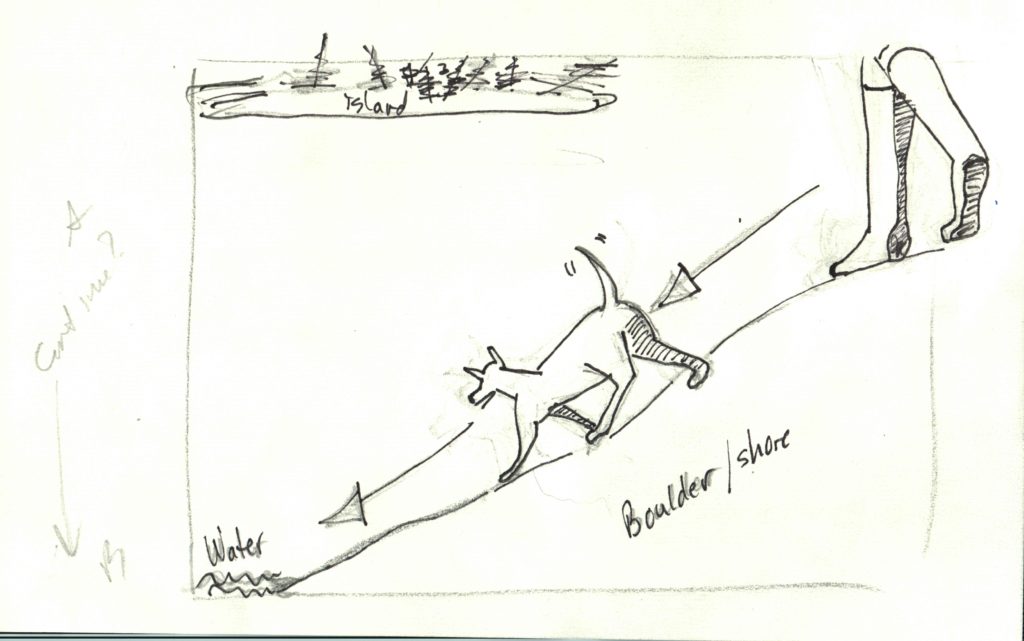
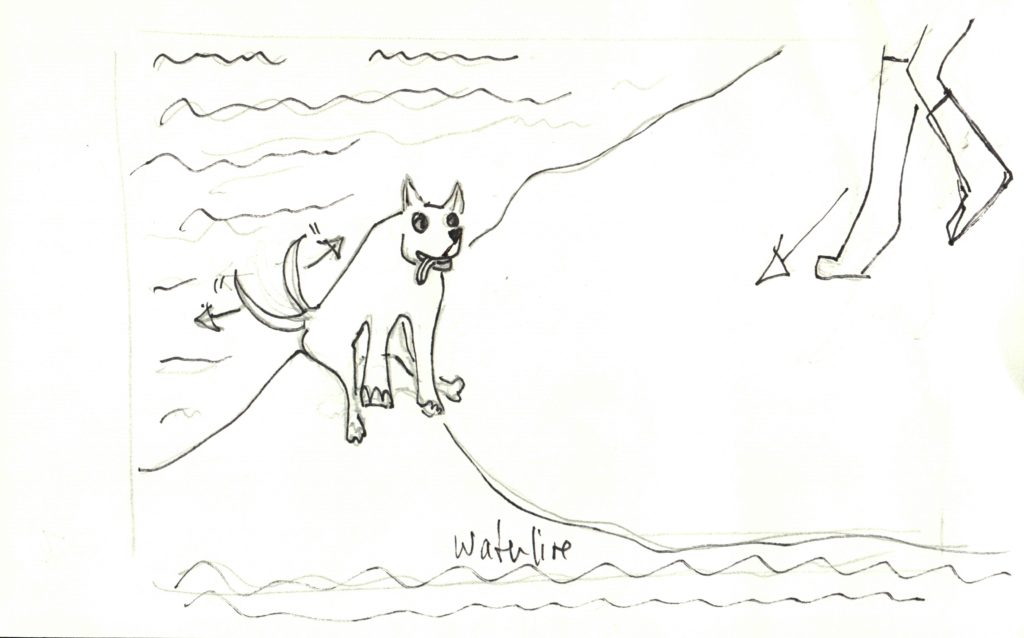
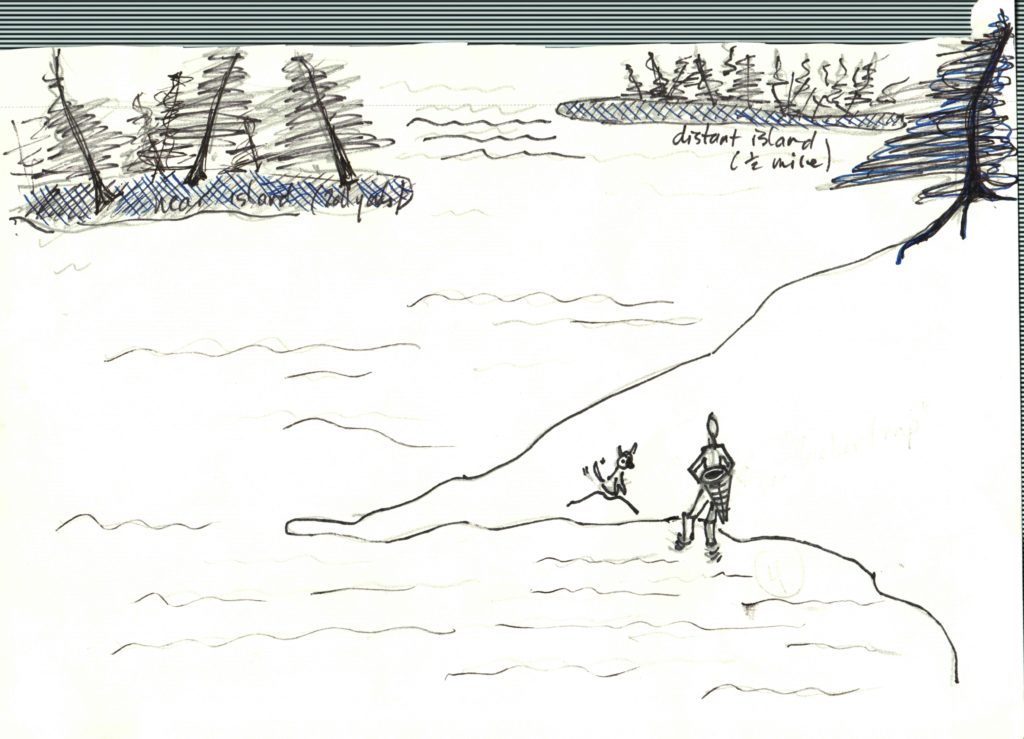
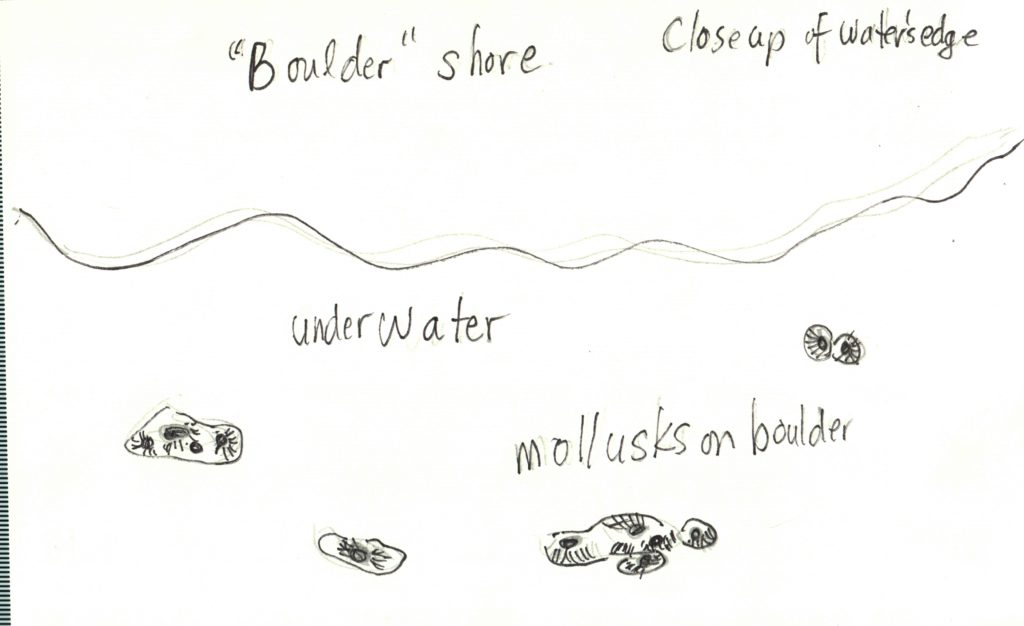
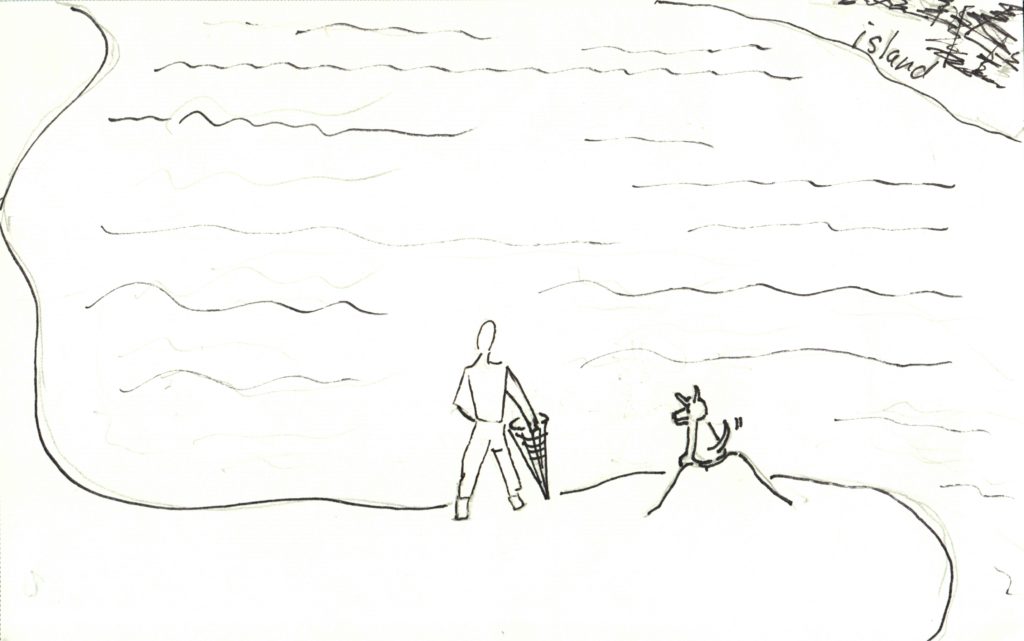
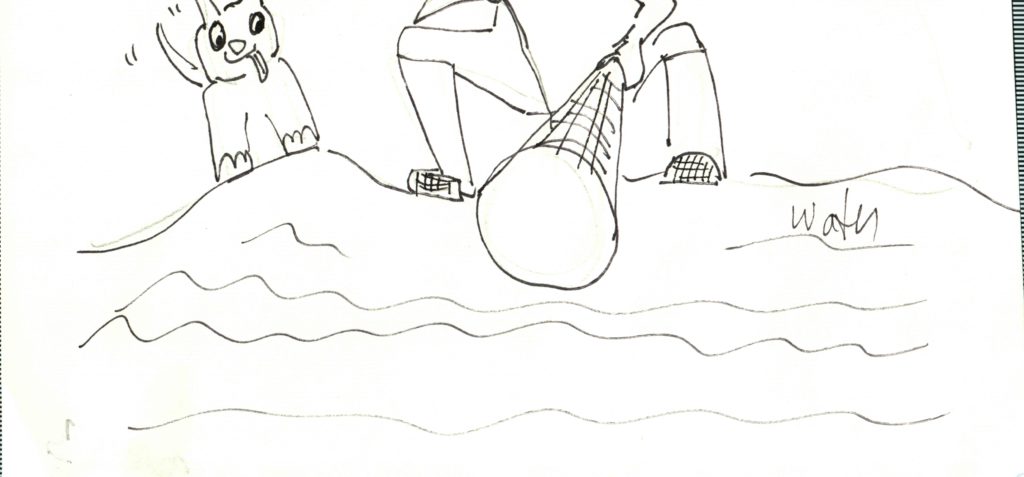
Our animator, Guillermo Gomez has been teaching and guiding me along the way. For one thing, it’s helpful to find the minimal effective motion that will serve the storytelling. In long shots or establishing shots, there either tends to be less movement or movement is often simplified. For example, we tend not to see facial expressions. You can also start a tricky physical action sequence, then cut away from it, to a reaction shot, then cut back to the character’s pose once they have completed the action. Of course, keep in mind that a variety of shots is important and adds visual interest.
So far, the most difficult animations seem to involve walking or running. (Add perspective and a z axis, and it becomes even trickier. However, having all your shots centered on a 2-D plane will get boring fast, so it’s worth it to do a few of these!) You can search “walk cycles” on the internet and find some great sketches and even videos showing you how to draw the sequences for animation. Before I attempted the storyboard sketch of dog walking down the slope, I watched the following video on a simplified quadruped walk cycle by Andrea Gerstmann and found it very helpful! Animation Stuff: Animating a Fox Trotting ( Quadruped Walk Cycle) (By the way, Gerstmann’s fox is adorable! She adds a lot of additional body and head movement that really brings the character’s personality to life.) I think two of these shots will be challenging to animate: the dog and fisherman walking down the slope to the water and the fisherman crouching by the water’s edge. We might show the fisherman from behind as he starts to crouch. It seems like the perspective could be easier to animate while keeping his face hid from viewers. We’ll see what our talented new illustrator Erica Kaminsky comes up with in the next two weeks as she sketches these images and adds some more key frames and probably some rough extremes. I wanted some images from the Fishy’s perspective, so Erica and Guillermo came up with the cool angle in the last shot with the Fisherman crouching over the water with dog peering over. Kudos again to Erica, who also suggested we do some mollusks on the underwater rocks.
For more tips on basic animation principles, you can find a great 25-minute summary by Alan Becker here: 12 Principles of Animation. Stay tuned for the further adventures of “Alice” (aka Majken) in filmmaking Wonderland.
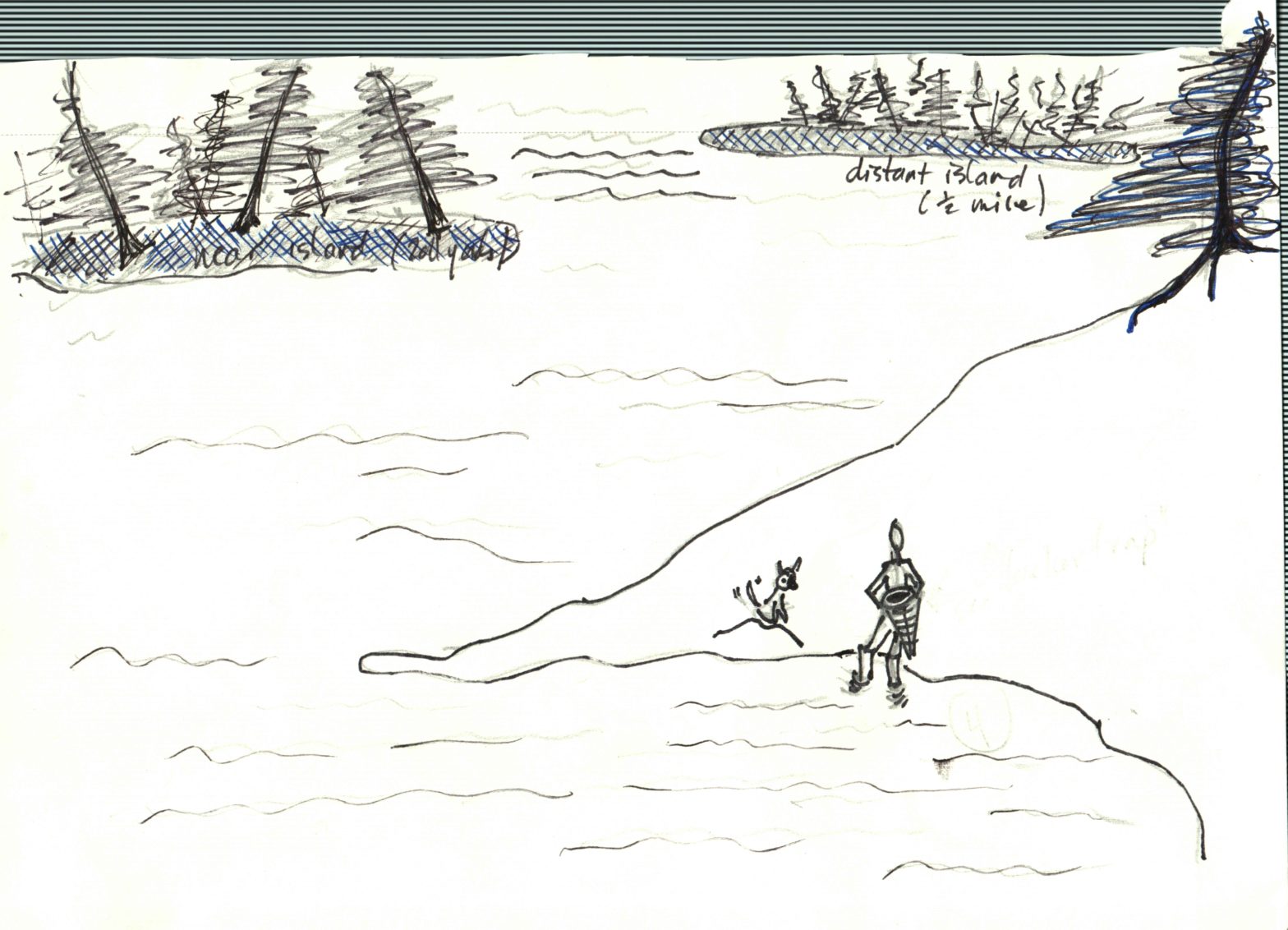
I really like what you’re writing Majken! You are both inspiring and motivating me – thank you.
Hi Diana! It’s so nice to hear from you! What are you up to these days? Thank you so much for reaching out! Please keep in touch.
Best!
Majken